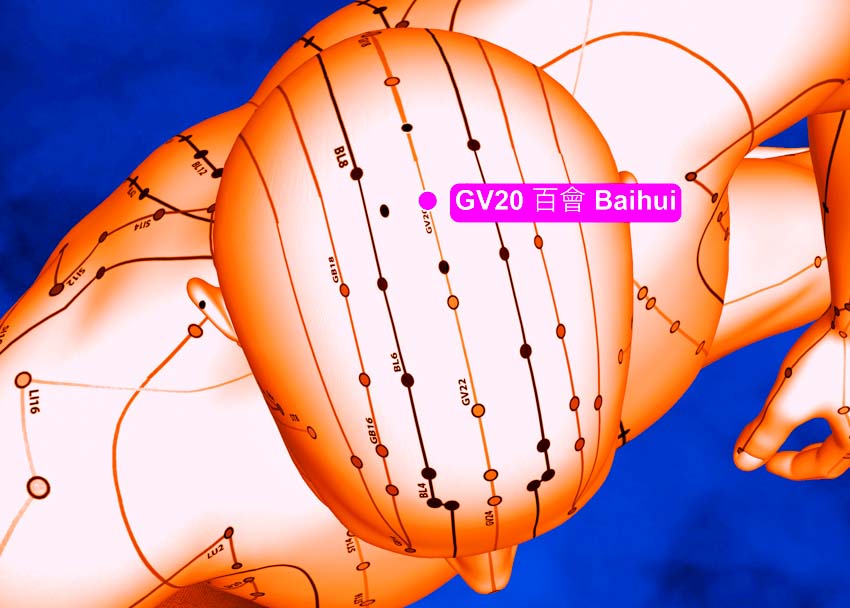
Acupuncture provides support for Alzheimer's disease patients. Hebi People’s Hospital (Heilongjiang Province) researchers compared acupuncture plus exercise with exercise monotherapy. Adding acupuncture to the therapeutic regimen improved patient outcomes.
The researchers determined that electroacupuncture combined with aerobic exercises improves body flexibility, reduces inflammation in the brain, stimulates action potentials in the cerebral cortex, and promotes local neural function in patients with Alzheimer's disease. The results show that the integrative medicine approach produces superior patient outcomes over exercise monotherapy. [1]
The research team investigated the use of acupuncture because prior research demonstrates that stimulation of GV20 (Baihui) and other acupoints regulates the activity of acetylcholine transferase, stimulates the activity of acetylcholine lipase, reduces beta-amyloid deposits in the brain (amyloid plaques), and benefits mobility and cognitive function in Alzheimer's disease patients.
Observation parameters in this study included the Mini-Mental State Examination (MMSE), Montreal Cognitive Assessment (MoCA), Alzheimer's Disease Assessment Scale-Cognitive Section (ADAS-Cog) for cognitive function, Clinical Dementia Rating (CDR), Neuropsychiatric Inventory (NPI) for neuropsychiatric behavior, brain-derived neurotrophic factor (BDNF) levels, and insulin-like Growth Factor-1 (IGF-1) serum levels. The BDNF and IGF-1 levels were deemed important investigation parameters because neurotrophins are proteins involved in the development, function, and preservation of neurons.
Upon completion of the treatments, patients’ MMSE and MoCA scores increased more significantly from 15.26 ±3.46 to 23.67 ±3.79 and 13.51 ±2.38 to 24.61 ±3.78 respectively in the electroacupuncture group, while those in the exercise monotherapy observation group changed from 15.23 ±3.48 to18.57 ±3.69 and from 3.49 ±2.41 to 19.54 ±3.62. ADAS-cog scores decreased from 45.63 ±5.26 21.46 ±2.85 in the electroacupuncture group, greater than that in the observation group (45.62 ±5.24 to 27.62 ±3.48).
CDR and NPI decreased more significantly in the electroacupuncture group, while BDNF and IGF-1 increased more significantly in electroacupuncture group. The results demonstrate that all subjective and objective parameters improved more significantly when electroacupuncture was added to the therapeutic regimen.
For the aerobic exercise group, daily exercise sessions were comprised of a 5-minute warm-up, 30-minute aerobic exercises of medium intensity, and a 5-minute wrap-up. Intensity was set at 70% of the patient Maximum Heat Rate (MHR) during the process. MHR was calculated as (220-age) × (60%-80%).
For the electroacupuncture group, patients took a supine position and received electroacupuncture in addition to the same exercise program. Filiform acupuncture needles were used at the following points main meridian points:
- GV20 (Baihui)
- PC6 (Neiguan)
- GV26 (Renzhong)
- GV14 (Dazhui)
- GB20 (Fengchi)
After insertion, needles were connected to an electroacupuncture device. The frequency was set to 5 Hz. Maximum intensity was 1 mA. Treatment lasted for 30 minutes per session for five consecutive days, followed by a 2-day break, with seven days completing a course of care. Eight courses were administered in total.
The subjects in this study included 105 patients with Alzheimer's disease. The patients were randomly divided into an aerobic exercise monotherapy group and an electroacupuncture plus exercise group. Within the 52 patients in the aerobic exercise group, 25 were males and 27 were females. Age range was 60 to 70 years. Mean age was 66.38 ±2.49 years. The course of disease ranged from 1 to 3 years. Mean course of disease was 2.46 ±0.21. Average duration of education was 7.59 ±1.63 years.
Within the 53 patients in the electroacupuncture group, 26 were males and 27 were females. Age range was 62 to 75 years. Mean age was 66.79 ±2.51 years. The course of disease ranged from 2 to 3 years. Mean course of disease was 2.51 ±0.23. Average duration of education was 7.84 ±1.64 years.
The research is promising and demonstrates the clinical effectiveness of both exercise and acupuncture. Although no cure exists at this time and no treatment option to date is completely adequate, this protocol demonstrates that significant results are achievable.
One recent development is the US FDA approval of Aducanumab, an amyloid beta-directed antibody. This drug is approved for use in Alzheimer’s disease patients to reduce beta-amyloid plaque buildup in the brain. Clinical evidence has not yet been established that this drug improves memory and cognitive function. Adverse effects include headaches, dizziness, confusion, nausea, bleeding on the surface of the brain, and swelling of the brain.
Since this a relatively recent development, we look forward to future research on the risks and benefits of this medication. Perhaps most intriguing, is whether or not adding acupuncture to the drug therapy regimen has the ability to prevent bleeding and swelling of the brain. At HealthCMi, we encourage limiting adverse effects associated with various therapies and this type of investigation is warranted given the new drug’s ability to reduce plaque buildup.
Reference:
[1] Zhang Qianqian, Zhou Junjie, Zhao Xiaokun, Effects on the Cognitive Function of An Integrated Protocol of Moderate Aerobic Exercise and Electroacupuncture in Patients with Alzheimer's disease, China Journal Convalescent Medicine, Oct.2021, Vol.30, No. 10.


